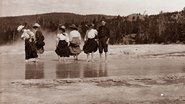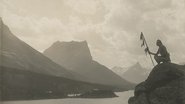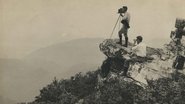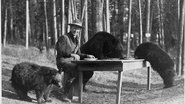-

-
-
The National Parks: America's Best Idea : Season 1
-
Air date: 26 Sep '09 - 6 episodesFilmed over the course of more than six years at some of nature's most spectacular locales – from Acadia to Yosemite, Yellowstone to the Grand Canyon, the Everglades of Florida to the Gates of the Arctic in Alaska - “The National Parks: America's Best Idea” is nonetheless a story of people: people from every conceivable background – rich and poor; famous and unknown; soldiers and scientists; natives and newcomers; idealists, artists and entrepreneurs; people who were willing to devote themselves to saving some precious portion of the land they loved, and in doing so reminded their fellow citizens of the full meaning of democracy.
-
-
List of Episodes (6)
-
The National Parks: America's Best Idea (2009)

-
1. The Scripture of Nature (1851-1890)
27 Sep '09In 1851, word spreads across the country of a beautiful area of California's Yosemite Valley, attracting visitors who wish to exploit the land's scenery for commercial gain and those who wish to keep it pristine. Among the latter is a Scottish-born wanderer named John Muir, for whom protecting the land becomes a spiritual calling. In 1864, Congress passes an act that protects Yosemite from commercial development for "public use, resort and recreation" - the first time in world history that any
-
The National Parks: America's Best Idea (2009)

-
2. The Last Refuge: 1890-1915
28 Sep '09By the end of the 19th century, widespread industrialization has left many Americans worried about whether the country - once a vast wilderness - will have any pristine land left. At the same time, poachers in the parks are rampant, and visitors think nothing of littering or carving their names near iconic sites like Old Faithful. Congress has yet to establish clear judicial authority or appropriations for the protection of the parks. This sparks a conservation movement by organizations such as
-
The National Parks: America's Best Idea (2009)

-
3. The Empire of Grandeur: 1915-1919
29 Sep '09In the early 20th century, America has a dozen national parks, but they are a haphazard patchwork of special places under the supervision of different federal agencies. The conservation movement, after failing to stop the Hetch Hetchy dam, pushes the government to establish one unified agency to oversee all the parks, leading to the establishment of the National Park Service in 1916. Its first director, Stephen Mather, a wealthy businessman and passionate park advocate who fought vigorously to
-
The National Parks: America's Best Idea (2009)

-
4. Going Home: 1920-1933
30 Sep '09While visiting the parks was once predominantly the domain of Americans wealthy enough to afford the high-priced train tours, the advent of the automobile allows more people than ever before to visit the parks. Mather embraces this opportunity and works to build more roads in the parks. Some park enthusiasts, such as Margaret and Edward Gehrke of Nebraska, begin "collecting" parks, making a point to visit as many as they can. In North Carolina, Horace Kephart, a reclusive writer, and George Masa
-
The National Parks: America's Best Idea (2009)

-
5. Great Nature: 1933-1945
01 Oct '09To battle unemployment in the Great Depression, Franklin D. Roosevelt creates the Civilian Conservation Corps, which spawns a "golden age" for the parks through major renovation projects. In a groundbreaking study, a young NPS biologist named George Melendez Wright discovers widespread abuses of animal habitats and pushes the service to reform its wildlife policies. Congress narrowly passes a bill to protect the Everglades in Florida as a national park – the first time a park has been created
-
The National Parks: America's Best Idea (2009)

-
6. The Morning of Creation (1946-1980)
02 Oct '09Following World War II, the parks are overwhelmed as visitation reaches 62 million people a year. A new billion-dollar campaign – Mission 66 – is created to build facilities and infrastructure that can accommodate the flood of visitors. A biologist named Adolph Murie introduces the revolutionary notion that predatory animals, which are still hunted, deserve the same protection as other wildlife. In Florida, Lancelot Jones, the grandson of a slave, refuses to sell to developers his family's
-












